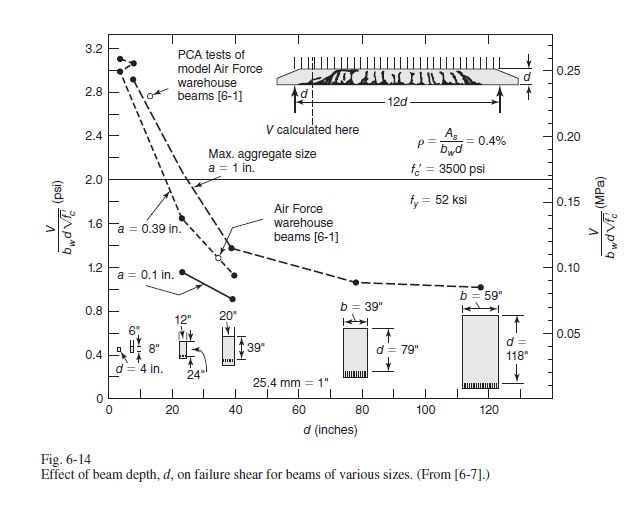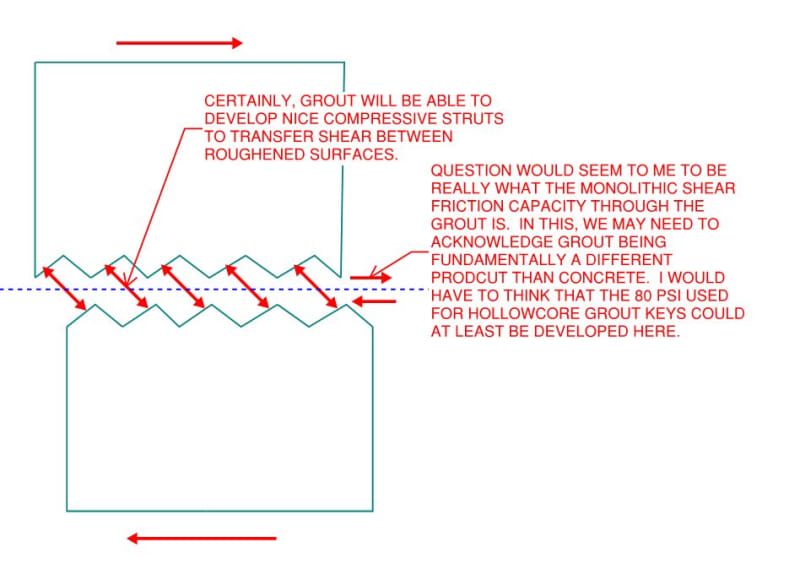bugbus
Structural
- Aug 14, 2018
- 533
With regard to the strength of shear planes at cold joints / construction joints, is there a minimum aggregate size required to ensure that the aggregate interlock component of the shear capacity is achieved?
The various codes normally state a minimum roughness that has to be achieved, but not a minimum aggregate size:
AASHTO & ACI - minimum roughness 1/4" (6.35 mm)
AS3600/5100.5 - interface must be 'deliberately roughened' - requirements by various authorities include NSW RMS (3 mm minimum roughness). Minimum aggregate size covered by the codes is implied to be 10 mm but not stated explicitly (as far as I can tell).
I have a situation where two precast elements are to be joined. The faces of the precast elements will be roughened to the minimum amplitude, the gap (50 mm wide) between them grouted with high strength cementitious grout, and after the grout achieves a certain strength the elements are post-tensioned together with several high tensile bars. The interface is required to transmit a relatively large shear force and has been designed based on the Australian code, assuming a 'deliberately roughened surface'.
I am wondering whether the grout in the gap ought to have a coarse aggregate added, and what its minimum size should be. My feeling is that, yes, this requires a coarse aggregate since the potential shear plane could form right through the middle of the grout layer. The grout supplier states that a 10 mm aggregate can be included in the mix. But would a smaller aggregate be OK? 3 or 6 mm?
The various codes normally state a minimum roughness that has to be achieved, but not a minimum aggregate size:
AASHTO & ACI - minimum roughness 1/4" (6.35 mm)
AS3600/5100.5 - interface must be 'deliberately roughened' - requirements by various authorities include NSW RMS (3 mm minimum roughness). Minimum aggregate size covered by the codes is implied to be 10 mm but not stated explicitly (as far as I can tell).
I have a situation where two precast elements are to be joined. The faces of the precast elements will be roughened to the minimum amplitude, the gap (50 mm wide) between them grouted with high strength cementitious grout, and after the grout achieves a certain strength the elements are post-tensioned together with several high tensile bars. The interface is required to transmit a relatively large shear force and has been designed based on the Australian code, assuming a 'deliberately roughened surface'.
I am wondering whether the grout in the gap ought to have a coarse aggregate added, and what its minimum size should be. My feeling is that, yes, this requires a coarse aggregate since the potential shear plane could form right through the middle of the grout layer. The grout supplier states that a 10 mm aggregate can be included in the mix. But would a smaller aggregate be OK? 3 or 6 mm?


